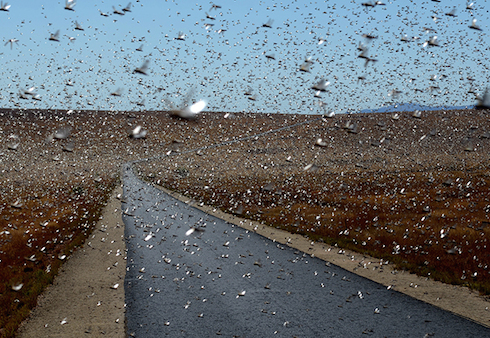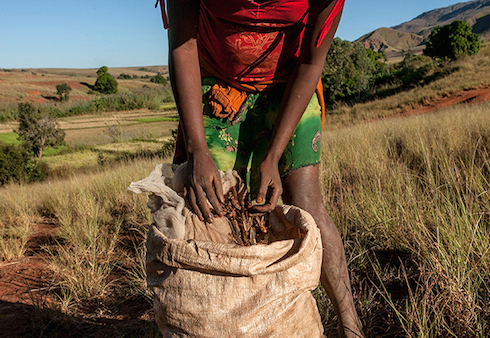A plague of locusts - not in the Bible, in Madagascar
 Print This Print This
By Staff Writers, Russia Today
RT.com
Tuesday, Sep 2, 2014
 |
| A swarm of locusts invades the center of Madagascar capital Antananarivo on August 28, 2014. (AFP Photo / Rijasolo) |
Madagascar has been taken over by uncountable numbers of locusts. This year, the leaf munchers' invasion has not only brought fears of food shortages - the country's capital city residents are also at risk, as some catch the toxic insects for food.
The sky over the Madagascar capital Antananarivo has turned dark - an endless stream of locusts has brought biblical scenes.
 |
| A swarm of locusts invades the center of Madagascar capital Antananarivo on August 28, 2014 (AFP Photo / Rijasolo) |
The country is suffering from a locust plague for the third year running, as billions of insects are on their annual migration route.
 |
| A swarm of the Red Locusts 20 kilometres north of the town of Sakaraha, south west Madagascar (AFP Photo / Bilal Tarabey) |
In 2012, the government declared a national emergency and allowed the Food and Agriculture Organization of the United Nations (FAO) to launch a pesticide campaign. Over a million hectares of farmlands have been treated with pesticides, but the locusts are still multiplying.
 |
| A swarm of the Red Locusts 20 kilometres north of the town of Sakaraha, south west Madagascar (AFP Photo / Bilal Tarabey) |
After wiping out fields of crops and prompting fears of food shortages (some 13 million people's incomes could be threatened by the invasion, according to FAO), new hordes of locusts were brought to the country's capital by a heat wave in the Central Highlands region.
 |
| A member of the technical team of the Food and Agriculture Organization of the United Nations (FAO), holds a locust at a FAO camp in Tsiroanomandidy, Madagascar (AFP Photo / Rijasolo) |
But in Antananarivo, it's the locusts who become food for some of the city residents. People catch the low-flying bugs to eat. As many insects are contaminated by pesticides, the situation is quite dangerous, putting people's health at risk.
 |
| A farmer from Amparihibe village shows a bag full of locust which will be used to feed pigs, on May 7, 2014 in Tsiroanomandidy, western Madagascar (AFP Photo / Rijasolo) |
Source URL
|
 Print This Print This

|

